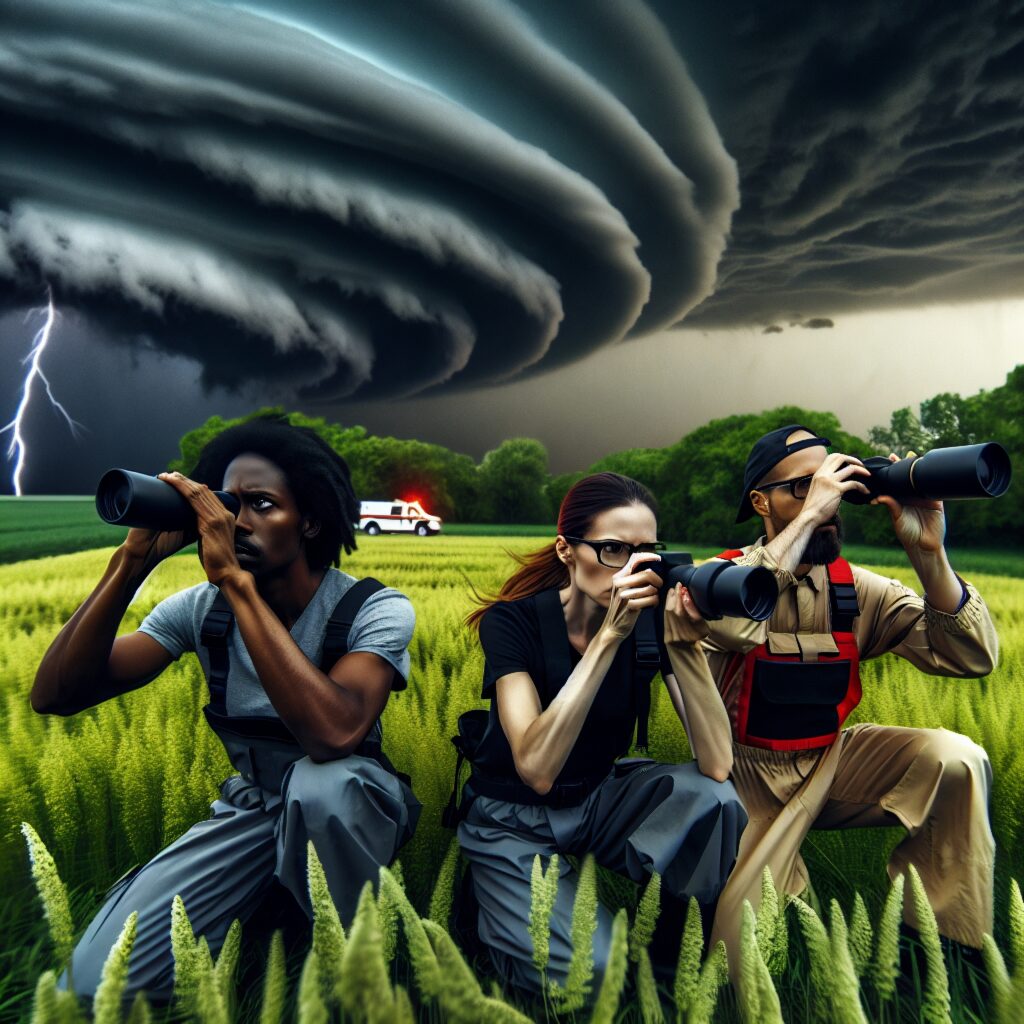Storm Spotting Safety
Storm spotting can be an important way to help communities prepare for severe weather, but it’s crucial to prioritize your safety

Don’t lose focus when storm spotting. Getting distracted like these people can get you into trouble.
Here are some key guidelines:
- Stay Focused: Don’t play with your cell phones, lap tops, and watching online sources. Your job is to watch the horizon.
- Plan escape routes: Always know where you can go if the storm takes a turn for the worse. Have multiple routes in mind in case one gets blocked.
- Monitor weather conditions: Stay updated on the latest warnings and advisories from the National Weather Service (NWS). Be aware of rapidly changing weather patterns.
- Seek shelter when necessary: Don’t hesitate to head for a safe location if the storm intensifies or you feel unsafe. There’s always time to go back and assess damage later.
- Beware of lightning: Lightning is a major hazard for storm spotters, since they’re often outdoors in open areas. There’s no safe place outside during a thunderstorm. If you can’t get into a sturdy building, stay in a hard-topped vehicle.
- Maintain a safe distance: Avoid power lines, trees, and other tall objects that could be struck by lightning or become flying debris in high winds.
- Night spotting is discouraged: It’s harder to see storm features clearly and navigate safely at night.
Remember, your safety is paramount. If you ever feel uncomfortable, prioritize getting to safety over continuing to spot the storm.
Here are some additional dangers to be aware of:
- Lightning: Storms always have lightning. Avoid being the tallest object in the area and stay clear of power lines. There’s no safe place outdoors during a storm, so get in a car or sturdy building.
- Debris: High winds can hurl debris, so stay away from trees, power lines, and signs.
- Flooding: Heavy rain can cause flash floods. Don’t drive through flooded roadways.
- Road conditions: Storms can cause low visibility and slick roads. Drive with caution and avoid stopping on the side of the road if possible.
Remember, you can always report storm damage after the fact. Your safety is the top priority! For more detailed information, you can check the National Weather Service’s Mobile Spotting Safety
Rules: https://www.weather.gov/media/pah/Skywarn/SafetyForMobileSpotters.pdf.
When storms hit, we are some of the first volunteers to respond. Get involved today.
